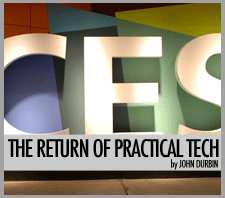Poor Loyalty. You so misunderstood.
Posted by Lynn Lim | November 9, 2012
Poor brand loyalty. Everybody talks about it but nobody quite understands it. Some brands think if they call programs loyalty then it will magically happen, even if they’re really dealing with a completely different animal such as a rewards program or payment system. It’s more than a tweet or a “like.” Throw in buzzy buzzwords like social, mobile, gamification, and brand advocates into the mess along with its touchy-feely nature and it’s no wonder 72% of CMOs don’t feel sufficiently prepared to build it. Here are some reasons why.
The way we think and talk about it
One issue is the idea that loyalty is built through… a loyalty program. True, promotions promote products or events, but that phrasing doesn’t quite work for loyalty. All it really does is muddle and narrow the definition. Brand loyalty is the result of three elements: product, customer service and *gasp* marketing. It’s something all three should be working together to build holistically, not relegated to a specific program in the marketing mix. Despite what some say, those elements aren’t mutually exclusive and marketing can play a role. It already does, it is possible to blend them and it can work. Think Starbucks crowdsourcing flavors and products or Starwood addressing a customer’s complaint via Twitter.
We don’t understand the new landscape
Before digital, simply rewarding customers for buying their products made sense when their brand interactions largely centered on purchase and use. But customers now expect brands to stand out and have conversations with them. They want what they want when and how they want it. They are not shy about being vocal – good or bad. With the ”always on” nature of digital, those who heap constant praise have more visibility than ever. Before Facebook, Twitter and the like, it wasn’t quite as easy to find these brand advocates. But when they fall into your lap, it’s silly not to take full advantage of the opportunity they offer for an ongoing brand dialogue. For example, if you found them on Facebook, you need to understand how they got there and why to really play on their turf and keep them engaged. The same applies for effectively applying other white spaces like mobile and gamification.
We zoom in on shiny and new, not the big picture
It’s easy to get caught up with brand advocates and white spaces and think, “Aha! I’ve mushed them together into a loyalty program and that will build loyalty!” It’s tempting to slap on an extra white space layer to seem more tech-friendly or to reach those brand advocates. “My punchcard is now available as a mobile app.” “They are tweeting about me and they tweet often, so I will get them to tweet for me…but it’ll be my words, not theirs.” It’s not just about having a mobile presence or the tweet itself, but the experiences they represent. Customers expect brands to add more to their lives than just the product. And if the most vocal advocates are already deeply engaged with a brand, do justice to that connection by offering something beyond surface-level, transactional interactions.
There’s no one “right” mix and that means a unique opportunity
Each element represents only one possible piece of how each brand might define and approach loyalty. Brands spend a lot of time understanding their increasingly complex customer base, so why apply a blanket “loyalty program” approach over such hard work? Make a mix that truly reflects your brand’s identity and customers. Brand advocates are godsends, but there are other valuable customers such as the lifelong but less vocal consumer. Depending on your product category, a rewards program may make perfect sense as part of your brand’s approach to loyalty. For some, it may not make sense to leverage mobile or social just for the sake of doing so. Regardless, there are ways to make all of these programs and experiences much more satisfying for your customers and that is the biggest loyalty opportunity out there.
So zoom out. What opportunities do you see?
Leave a Comment
RSS feed for comments on this post · TrackBack URI


